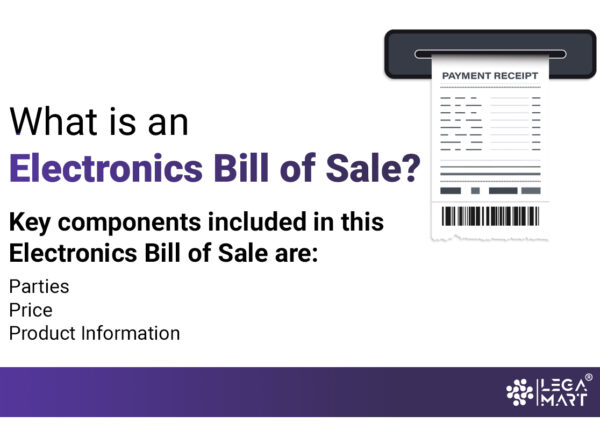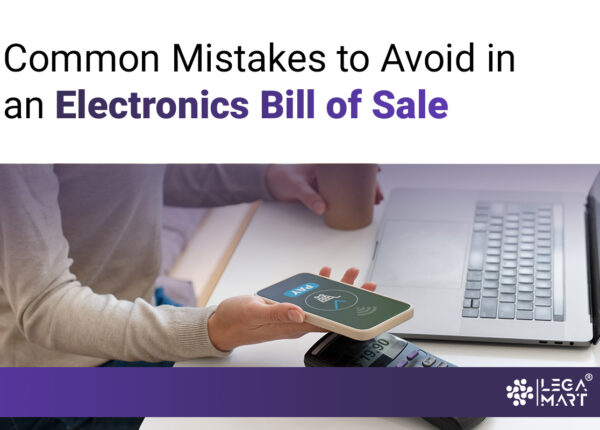Introduction
In our technology-driven world, electronic devices have become indispensable in various aspects of our daily routines. From work-related laptops to entertainment-centric tablets and communication-oriented smartphones, these gadgets hold significant value. As these devices become more integral to our lives, safeguarding them against potential loss or damage becomes paramount. One effective method to ensure this protection is by obtaining an electronics bill of sale. This document serves as a comprehensive record of the sale’s terms, encompassing critical details about both the buyer and seller, the item’s price, and any accompanying warranties or guarantees. Let’s delve deeper into the details of an electronics bill of sale.
What is an Electronics Bill of Sale?

An Electronics Bill of Sale is a legally recognized document designed to validate the ownership transfer of electronic devices, such as computers, laptops, iPads, or televisions. This crucial document establishes a binding agreement, offering protection to both the buyer and seller involved in the electronic device transaction.
An Electronics Bill of Sale meticulously outlines essential sale particulars, encompassing the names and addresses of both buyer and seller, the sale date, the agreed-upon purchase price, and comprehensive details about the electronic device. Importantly, this written bill of sale serves as concrete evidence of ownership, safeguarding the interests of both parties. Key components included in this Electronics Bill of Sale are:
- Parties: Clearly states the names of the selling party (seller) and the purchasing party (buyer).
- Price: Articulates the agreed-upon financial transaction for the electronic device.
- Product Information: Provides detailed information about the electronic device, covering aspects like the brand, model number, specifications, and features.
- Signature: Requires the seller’s signature, witnessed by a third party, finalizing the legal commitment established by the bill of sale.
Legal validity Issues on Electronics Bill of Sale
Navigating the purchase or sale of electronic devices requires a written bill of sale, offering crucial legal protection and serving as ownership proof in potential disputes. However, understanding the legal considerations involved in crafting an electronics bill of sale is paramount. Here are key points to bear in mind:
- Legal Professional Consultation: If uncertainty exists regarding the legal requirements for creating an electronics bill of sale, seeking guidance from a legal professional is advisable. Their expertise ensures the document aligns with all legal necessities.
- Inclusion of Specific Details: A comprehensive electronics bill of sale should specify details about the device, including make, model, serial number, and other identifying information. This ensures clarity about the sold item and its condition.
- Consideration of Warranties: If the sold device comes with a warranty, incorporating this information into the bill of sale is essential. This inclusion safeguards both the buyer and seller throughout the warranty period.
- Awareness of State Laws: Since bill of sale requirements vary by state, researching and understanding the laws in your specific state is crucial. Some states may mandate specific information in the bill of sale, while others may not.
- Retention of Copies: Both parties involved should retain a copy of the bill of sale for their records. This practice provides evidence of the transaction in case of disputes or issues.
Common Mistakes to Avoid in an Electronics Bill of Sale

In the realm of buying and selling electronics, the significance of a precisely crafted and accurate bill of sale cannot be overstated. However, the process of creating an electronics bill of sale can be intricate, with common mistakes that may lead to legal complications down the road. To steer clear of potential pitfalls, it is important to be cognizant of the errors that can occur during the creation of an electronics bill of sale. Here are some prevalent mistakes that both buyers and sellers should be mindful of and actively avoid:
- Lack of Signatures
Perhaps one of the most critical mistakes is the absence of signatures from the involved parties. Without signatures, the bill of sale may lack legal binding and could be contested in court. Imagine purchasing a camera with a bill of sale provided by the seller, only to realize they haven’t signed the document. In such cases, proving agreement to the sale terms becomes challenging if a dispute emerges.
- Using Unclear or Ambiguous Language
For example, using vague terms like “good condition” or “as is” without specific details about the device’s condition can create misunderstandings. Clarity in language is essential to avoid disputes, ensuring that both parties have a shared understanding of the device’s condition.
- Omitting Relevant Information
One of the primary errors is the omission of crucial details about the transaction. This includes information such as the device’s make and model, Purchase/sale dates, purchase price, and contact details of both parties. Failure to incorporate these details may make it challenging to prove the agreed-upon terms if a dispute arises.
Conclusion
The importance of an electronics bill of sale cannot be overstated especially when buying or selling electronic devices. This document not only establishes proof of ownership but also serves as a protective shield for both the buyer and seller involved in the transaction. In the event of legal disputes, the accurately detailed bill of sale stands as compelling evidence. Ensuring the inclusion of all necessary information, this document becomes a cornerstone for legal and binding transactions, providing both parties with the assurance and peace of mind that their dealings are in accordance with the law.




